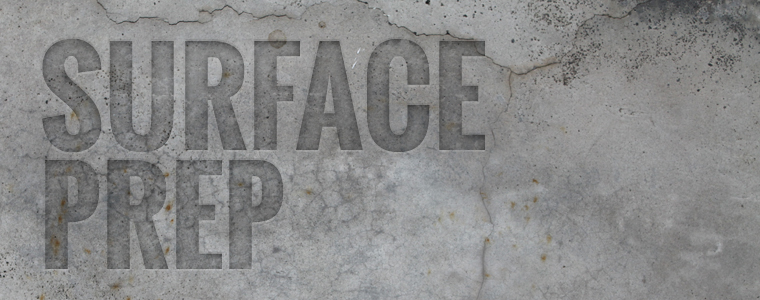
As with any surface, pre-painting preparation will have a lot to do with how successfully a coating performs when applied to concrete. The most desirable method of surface preparation will be determined by the product being used, the current state of the surface and the structure’s intended use.
If you are a facility owner or manager in charge of evaluating proposals for concrete surface preparation work, know that there are a few things that should be clearly stated in a contractor’s proposal. The methods for cleaning, profiling and spot-repairing the surface should all be covered in some detail. Also consider discussing anticipated levels of noise, dust and cleanup required by the job.
Before beginning the surface prep phase, it’s a good idea to see how the manufacturer of the intended concrete coating recommends proceeding. It may be that a certain method of surface prep is recommended, and there will certainly be recommended specifications for surface profile.
The most trusted industry standard for concrete surface preparation is SSPC-SP 13/NACE 6 Surface Preparation of Concrete. This standard lays out specific requirements for preparation by thermal, mechanical and chemical methods. Whatever specific methods are recommended, here are four general steps that are essential for pulling off a successful concrete surface preparation job.
1. Survey what you’ve got
A survey of the surface should aim to determine the strength and moisture content of the concrete. Any laitance— small particles built up on the surface due to the use of a water heavy mixture– should be removed before the coating is applied. Laitance usually appears as a white, powdery film over the concrete surface. It will negatively affect coating adhesion and must be removed before a coating is applied.
In addition to testing moisture levels, it’s important to test for oil and grease, which will have an effect on the method used to clean the surface. Some methods, such as acid etching, are ineffective at removing these contaminants, and should not be used when they are present. In most cases, if water droplets bead up on the concrete surface, either oil, grease or some sealing agent is present on the surface and will need to be removed. These tests should be backed up by more rigorous testing that measures condensation on plastic film if there is any doubt about moisture content.
2. Clean the surface
All dust, dirt, debris, curing agents, oil and grease must be removed from the surface before a coating is applied or it will fail to adhere properly. A simple water jetting operation can remove many of these substances, but grease and chemical stains may require specific cleaning agents to be effective. It is important that the chosen method for profiling the surface does not re-contaminate the clean surface.
3. Profile the surface
Some surface cleaning methods have the added benefit of profiling the surface while they clean. Because each coating comes with surface profile guidelines, abrasive blasting is often chosen to roughen the surface to the level mentioned by the coating manufacturer. Abrasive blasting also has the added benefit of removing laitance and other solid contaminants, while profiling the surface at the same time.
Acid etching is another method sometimes used to profile a concrete substrate, but this method has severe limitations. It is not viable on horizontal or overhead surfaces and it can also be dangerous if applied improperly.
4. Repair the surface
It’s important to remove all protrusions sticking out from the concrete more than 1/16’’ by grinding or scraping, and to patch any holes and cracks that persist after the initial application. Irregularities in the concrete should be patched or removed with an improved material. These fixes will need to be spot-coated later, so it’s important to know the cure time for the patch material in order to ensure paint is not applied to it too quickly.
Project specifications
Each of the above steps should be covered in much greater detail in the project’s specifications. Thorough and well-planned project specifications are key to a quality project. To get the conversation started with a certified industrial painter about your next concrete coating project, get in touch with Thomas Industrial Coatings.


